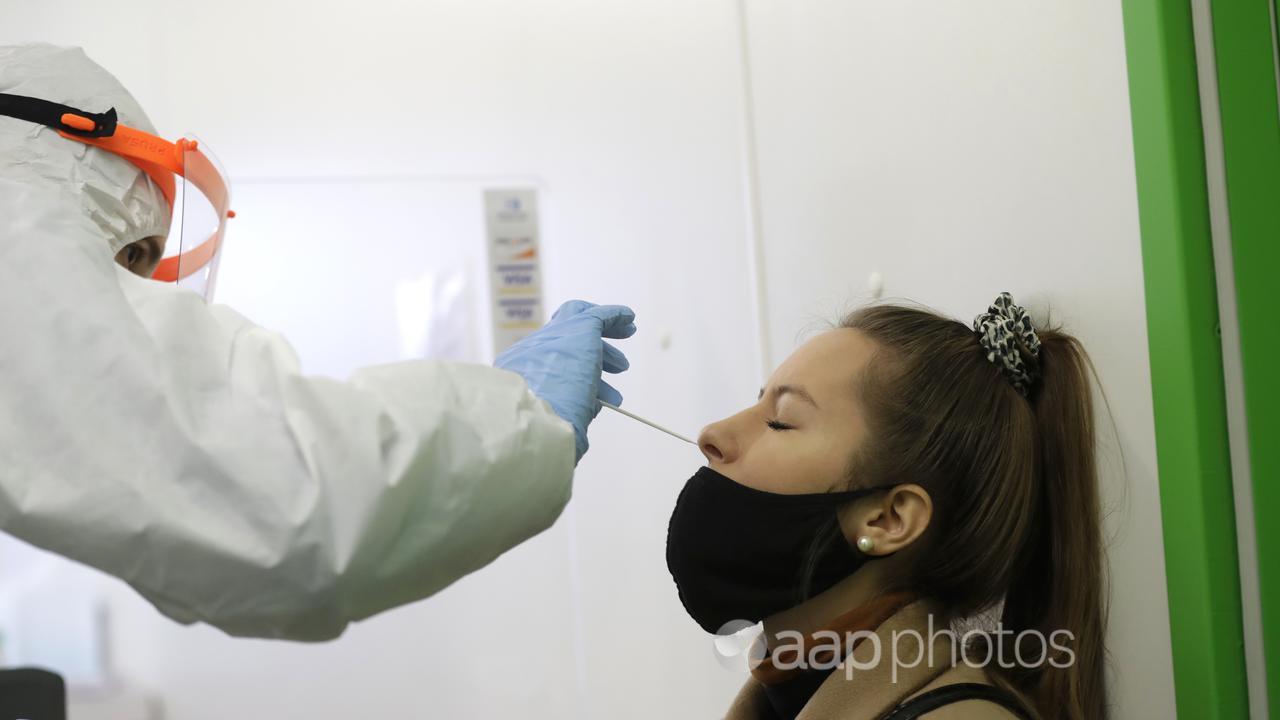A video posted to Facebook by the Know Your Rights Group claims that we should not be concerned about future COVID-19 variants as viruses only become less severe over time.
However, experts have rejected the claim, stating the mutations are chance events and there is no trend for virulence one way or the other.
The claim was made by Mike Palmer, life coach and founder of Know Your Rights, in response to a comment by the outgoing New Zealand Director-General of Health Dr Ashley Bloomfield.
Palmer quotes from a speech by Dr Bloomfield on July 19: “We’re still seeing development of sub variants and there could come a time when one is more severe”. He then goes on to say “but that’s not what the doctors and medical experts tell us. They tell us as variants come out, they become less and less and less severe … so why do we need to be concerned when there might be one that’s more severe when that’s not the way viruses actually work” (video mark 24min 35 sec).
When contacted for evidence to support the claim, Know Your Rights told AAP FactCheck in an email that “numerous articles” back the statement. They also provided links to three articles (here, here and here) which show that the Omicron variant is less severe than Delta.
However, infectious disease experts told AAP FactCheck that although Omicron is less severe than Delta, this does not mean new strains are necessarily less virulent than their predecessors. They said viruses mutate randomly and there is no guarantee a more virulent COVID variant won’t emerge in the future.
Professor Hamish McCallum, infectious disease ecologist at Griffith University, said: “The notion that viruses necessarily become less virulent with time is false”.
Professor Eddie Holmes, who last year won the Prime Minister’s Prize for his work sequencing the COVID genome, concurred, explaining that the virulence of a new variant is by natural selection to maximise virus transmission.
“Sometimes this means a low virulence. Sometimes high virulence,” he said in an email.
He added that successful virus variants have attributes that make them more likely to be transmitted and produce new generations of viruses quicker than competing strains. A virus’s ability to reproduce is generally not dependent on it having lower virulence.
“In the context of the recent Omicron strains, they are able to spread more rapidly than the previous strains (a higher effective R value), able to be infectious sooner (a shorter latent period) and are also able to evade the immune responses of humans who have either been vaccinated or infected already,” Prof McCallum said in an email.
“The only way in which one might expect lower virulence to be selected for is that strains that are so mild that people do not get tested or self isolate may have a better chance to transmit.”

Virulence may also affect a virus’s reproduction potential when fatality rates are so high that the virus prevents transmission by killing the host before it can be spread to a new one. However, fatality rates of COVID variants are too low to be a relevant factor.
“A virus needs to be very pathogenic indeed for lower fatality rates to be selected for,” Prof McCallum explained.
“This was certainly the case for myxomatosis in rabbits, when the initial strains were 99 per cent lethal whereas now the most commonly circulating strains are about 30 per cent lethal.
“But if you are looking at SARS-CoV-2, whether the mortality rate in humans is .01 per cent or 1 per cent is essentially irrelevant for viral evolution.”
Deakin University Chair of Epidemiology Professor Catherine Bennett echoed this assessment, adding that the experience of COVID has proven variants can and often do become more virulent in relation to their predecessors.
“No, it’s not a given that viruses become more mild and there is no evidence of that here,” Prof Bennett said in an email.
“Alpha was more virulent than ancestral strains and Delta more so again. Omicron is considered roughly equivalent to the ancestral strains, but we may be seeing some virulence creep with BA.5 having a different illness profile to previous sub variants and may pose more risk for lower respiratory infections (hence the “sticky” name given to it).”
Prof Holmes also noted the malaria virus has been around for more than 10,000 years with no evidence of a decline in severity.
The post’s claim has also been debunked here, here, here and here.
The Verdict
The claim that virus variants become milder over time is false. Experts confirmed to AAP FactCheck that mutations are chance events and there is no trend for virulence one way or the other, especially where fatality rates are too low to be significant to reproduction, such as in the case of COVID.
False – The claim is inaccurate.
* AAP FactCheck is an accredited member of the International Fact-Checking Network. To keep up with our latest fact checks, follow us on Facebook, Twitter and Instagram.
All information, text and images included on the AAP Websites is for personal use only and may not be re-written, copied, re-sold or re-distributed, framed, linked, shared onto social media or otherwise used whether for compensation of any kind or not, unless you have the prior written permission of AAP. For more information, please refer to our standard terms and conditions.


















